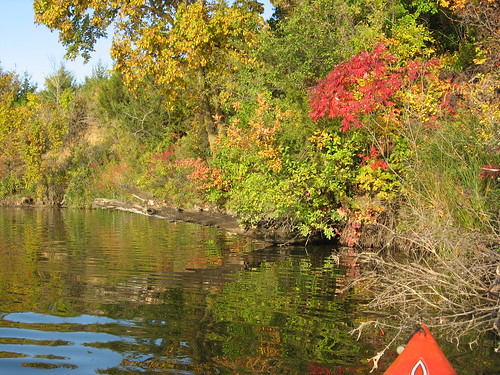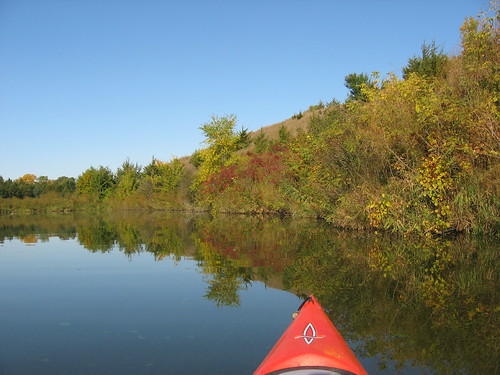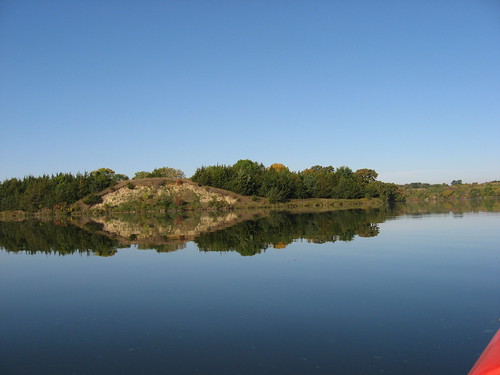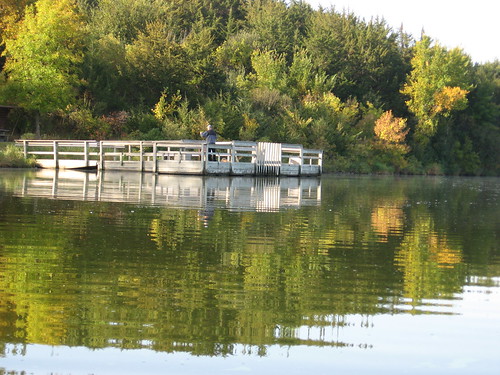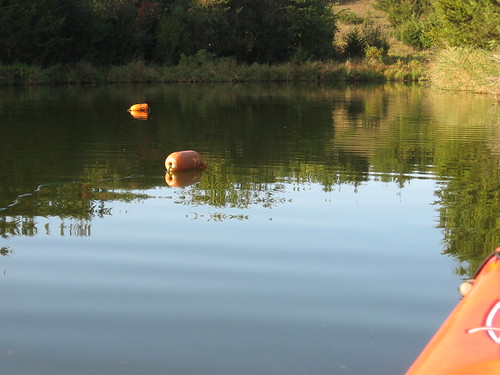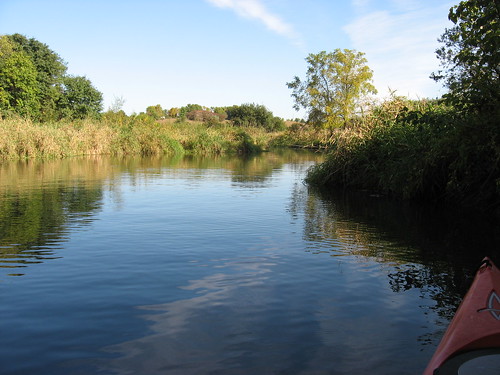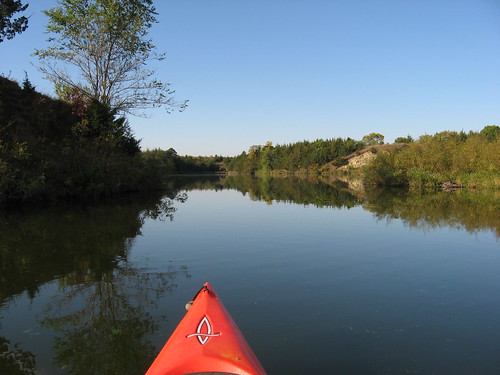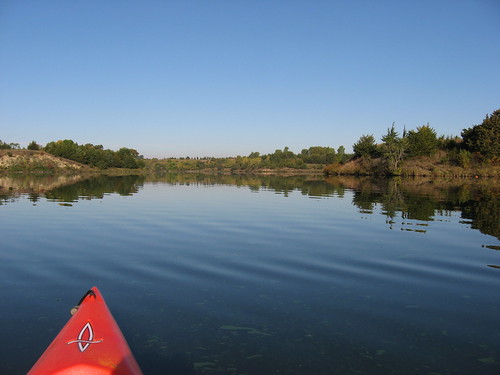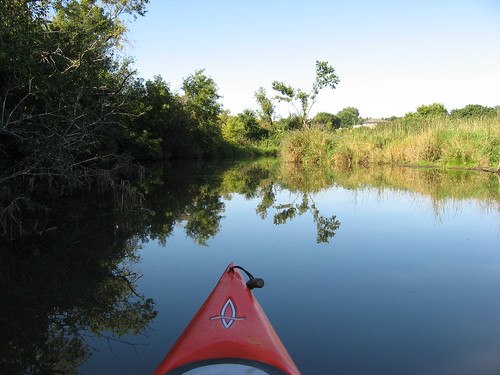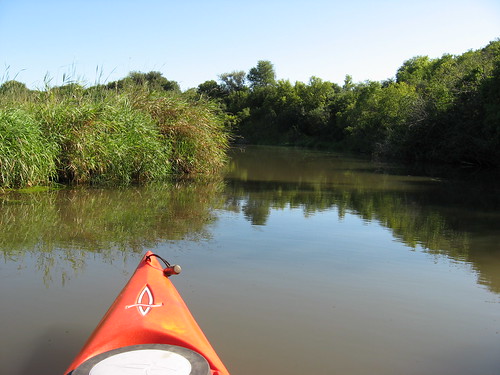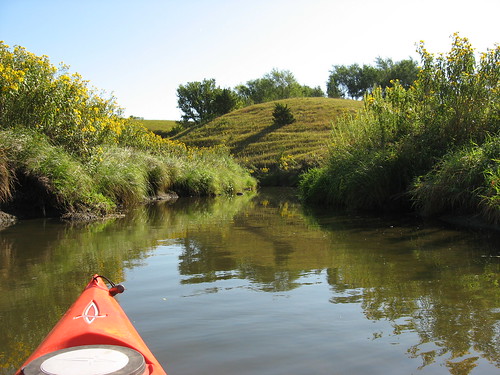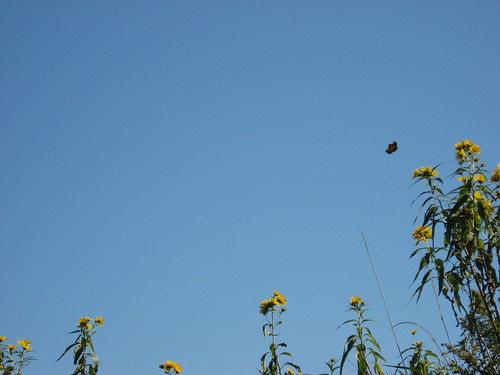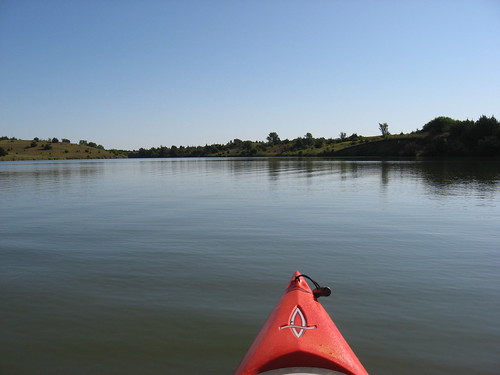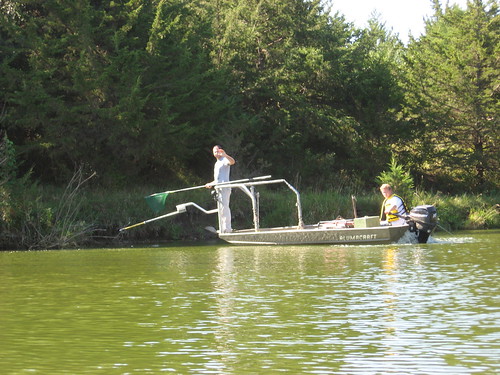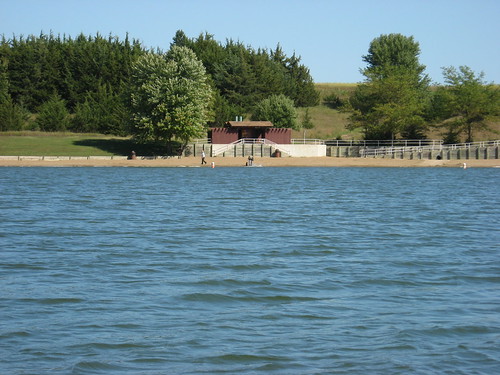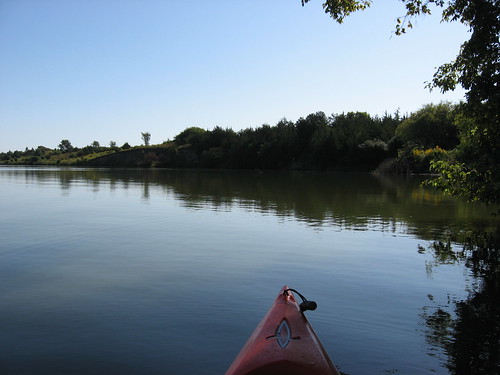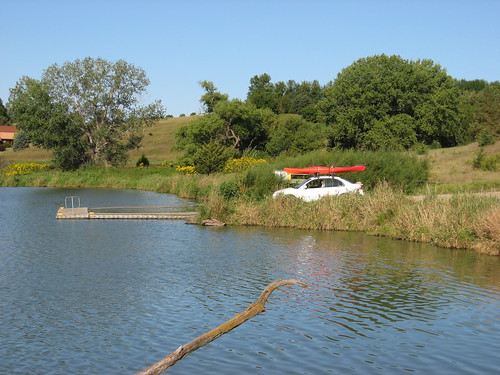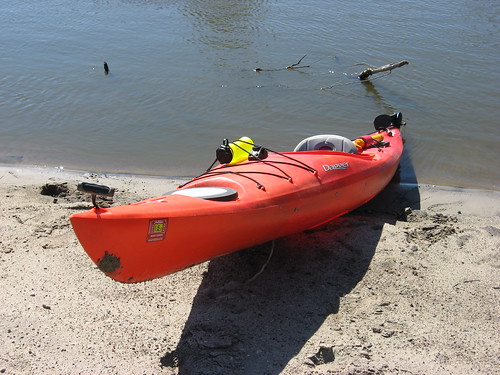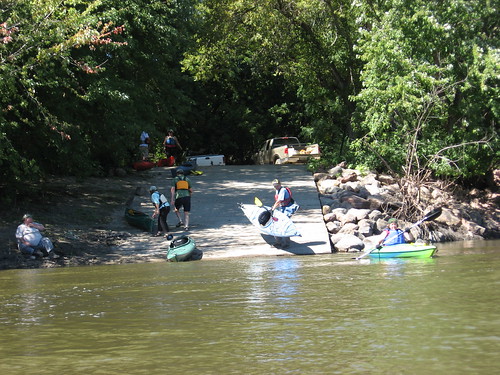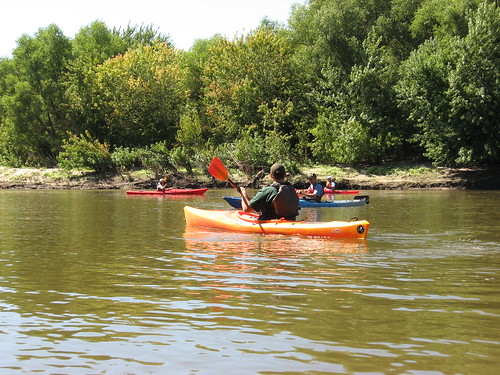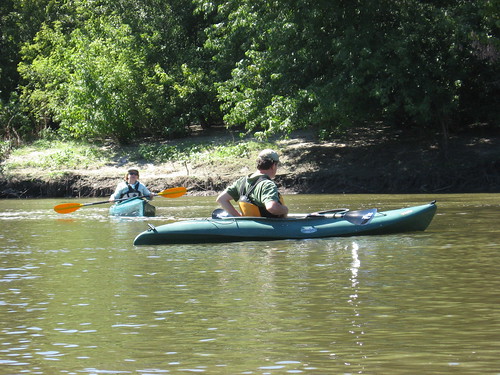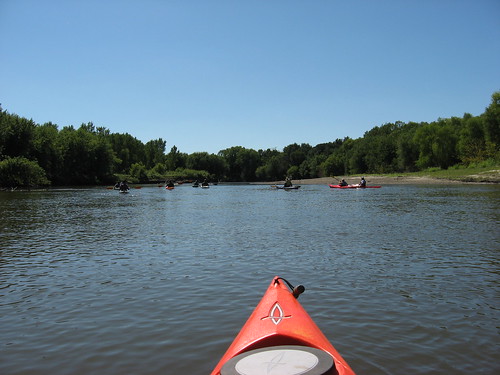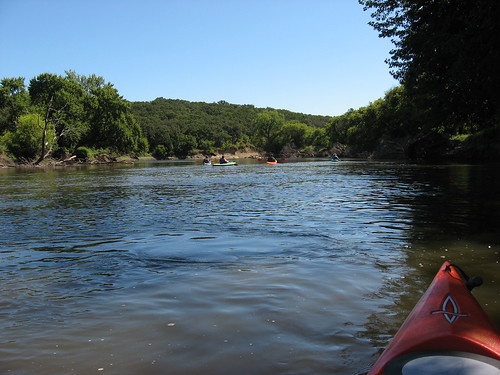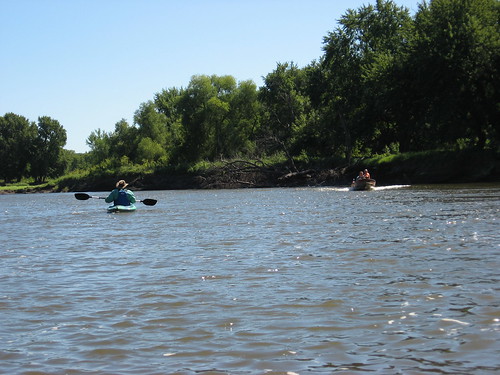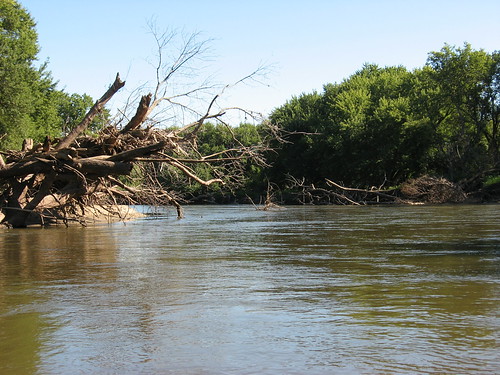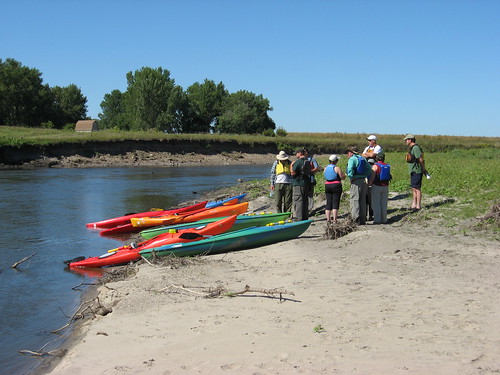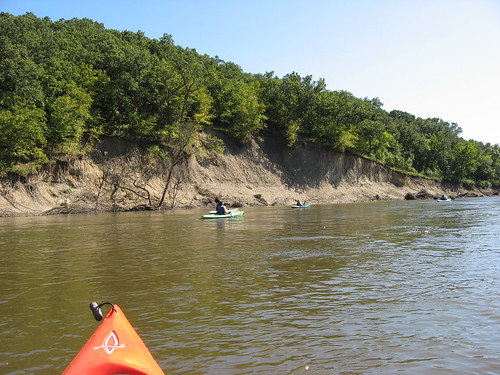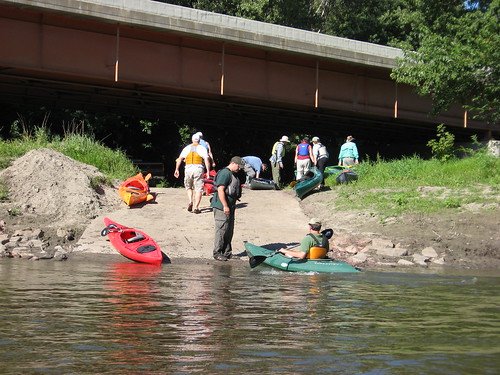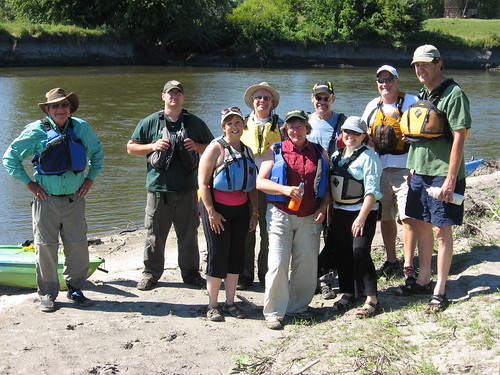About this time of year, people are often heading out to New England to experience the change of seasons in Vermont or New Hampshire. I rarely hear of visitors traveling to South Dakota to view the changing colors; I don’t see tour busses winding through the cottonwood groves along our prairie rivers and lakes to check out the fall foliage.
Still, there is a beautiful change in the trees, bushes, and grasses at this time of year, and this is apparent along the shores of our waterways. This morning I set out for a fall cruise along the shoreline of Lake Alvin and up into Nine Mile Creek. The South Dakota Department of Game, Fish, and Parks reports a shoreline of 4.3 miles on this 105 acre impounded lake.
The signs of approaching winter are visible in the changing colors along the shoreline. There has been a frost and even a light freeze this month; the temperatures have dropped down to about 30 degrees one or two nights and have hovered into the 40s most mornings and then risen up to the 70s in the afternoon. On hikes in nature areas around Sioux Falls, I tend to find myself slipping on hundreds of acorns falling on leaf-covered trails. Signs of winter are on display in retail stores as lawnmowers are discounted and the snow blowers are out on the showroom floor. Paddlers tend to become fixated on getting in those final cruises of the season.
When I arrived at the public access area on the southwestern shore this morning, there was no one in sight. I headed north up the lake along the western side and slowly cruised along taking in the changing colors of the leaves of trees and bushes. There was hardly any wind, so there was a mirror smooth quality to the lake surface. The changing colors of the foliage were reflected off the water creating a pleasing double-sided image.
As I moved north and passed the boat launch for the recreation area, I exchanged greetings with a guy fishing from the dock. A fishing pier has been built at the north end of the lake, and another guy was approaching it when I passed by. Maybe these were other retirees out to enjoy the morning away from the “to do” lists that seem to clutter up our lives. I especially like to take my cruises during “working hours” on weekdays.
I slipped into the channel leading up to the spillway and found plenty of depth to the water. Entering that channel at this time of year has sometimes been a challenge; this time, however, I was able to move up near the edge. I thought about what might happen if a paddler were to have a seizure or a jolt and lose control of the boat and drift over the spillway to the rocks below.
There is still evidence of the fisheries project underway from SDSU on the waters of Lake Alvin. Sets of floats were scattered at four or five locations; as I was concluding my cruise, the SDSU research boat came plowing down the center of the lake, probably checking whatever was marked by the floats. A South Dakota Statewide Fisheries Survey reported in 2010 that the most common fish in the lake were black crappie, black bullhead, and bluegill.
Moving south back down the lake, I came across a snake swimming about 15 feet offshore. I can’t remember seeing a snake swimming in this lake before. It was about 24 inches long, and I paddled up to check it out more closely. The snake looked just a little confused for a moment before I moved on. Hopefully, the snake decided that I was not out to harm it.
At the entrance to Nine Mile Creek, I came across a muskrat on a sandy spit that marks the waterway south into the creek. My rudder was up, and it was hard to keep on a good track while fumbling for my camera. Still, I captured the image before the critter shambled off the spit and into the water.
The cattails within the reeds along the shoreline of the creek are swelling and letting their woolly seeds scatter to begin afresh next year.
There was adequate depth to Nine Mile Creek, and I headed upstream to the bridge. My time for the cruise was running out, though, and I had to head back to the launching point, load up my kayak and make it to a lunch appointment.
This is a great time to check out the fall foliage along our South Dakota waterways. The cycle of brown, to deepening shades of green, and then back to brown is underway. Within a couple of weeks I expect that most of the leaves for deciduous trees will have fallen. The end of our paddling season is in sight, and I hope to get in a few more cruises.

